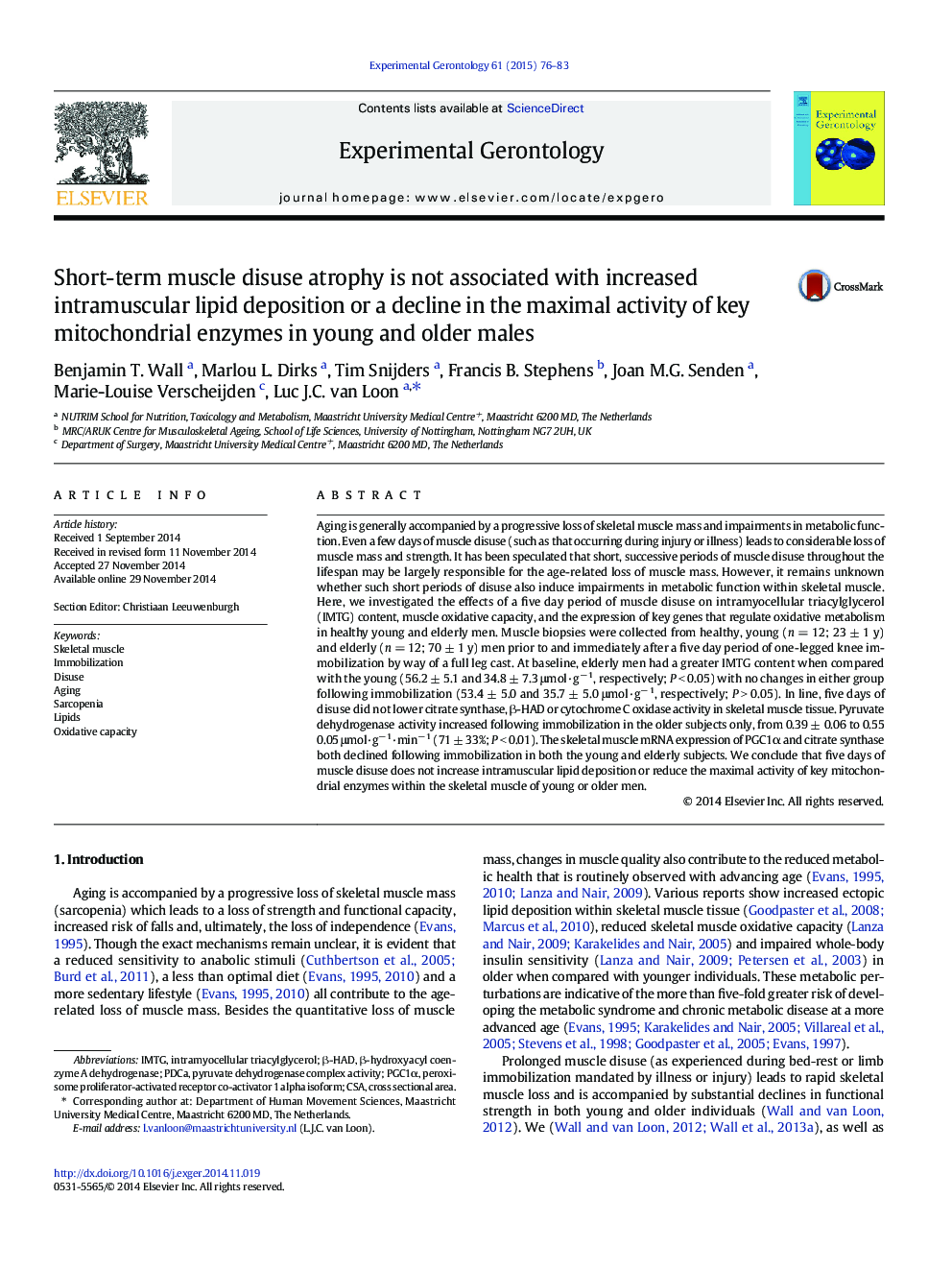| Article ID | Journal | Published Year | Pages | File Type |
|---|---|---|---|---|
| 1906211 | Experimental Gerontology | 2015 | 8 Pages |
•Short bouts of muscle disuse over the lifespan contribute to age-related declines in metabolic health.•Older men had reduced insulin sensitivity and greater muscle lipids compared with young men.•Five days of disuse rapidly decreased metabolic gene expression in young and older men.•Five days of disuse did not increase muscle lipid deposition in young or elderly men.•Five days of disuse did not impair mitochondrial enzyme activity in young or older men.
Aging is generally accompanied by a progressive loss of skeletal muscle mass and impairments in metabolic function. Even a few days of muscle disuse (such as that occurring during injury or illness) leads to considerable loss of muscle mass and strength. It has been speculated that short, successive periods of muscle disuse throughout the lifespan may be largely responsible for the age-related loss of muscle mass. However, it remains unknown whether such short periods of disuse also induce impairments in metabolic function within skeletal muscle. Here, we investigated the effects of a five day period of muscle disuse on intramyocellular triacylglycerol (IMTG) content, muscle oxidative capacity, and the expression of key genes that regulate oxidative metabolism in healthy young and elderly men. Muscle biopsies were collected from healthy, young (n = 12; 23 ± 1 y) and elderly (n = 12; 70 ± 1 y) men prior to and immediately after a five day period of one-legged knee immobilization by way of a full leg cast. At baseline, elderly men had a greater IMTG content when compared with the young (56.2 ± 5.1 and 34.8 ± 7.3 μmol·g− 1, respectively; P < 0.05) with no changes in either group following immobilization (53.4 ± 5.0 and 35.7 ± 5.0 μmol·g− 1, respectively; P > 0.05). In line, five days of disuse did not lower citrate synthase, β-HAD or cytochrome C oxidase activity in skeletal muscle tissue. Pyruvate dehydrogenase activity increased following immobilization in the older subjects only, from 0.39 ± 0.06 to 0.55 0.05 μmol·g− 1·min− 1 (71 ± 33%; P < 0.01). The skeletal muscle mRNA expression of PGC1α and citrate synthase both declined following immobilization in both the young and elderly subjects. We conclude that five days of muscle disuse does not increase intramuscular lipid deposition or reduce the maximal activity of key mitochondrial enzymes within the skeletal muscle of young or older men.
